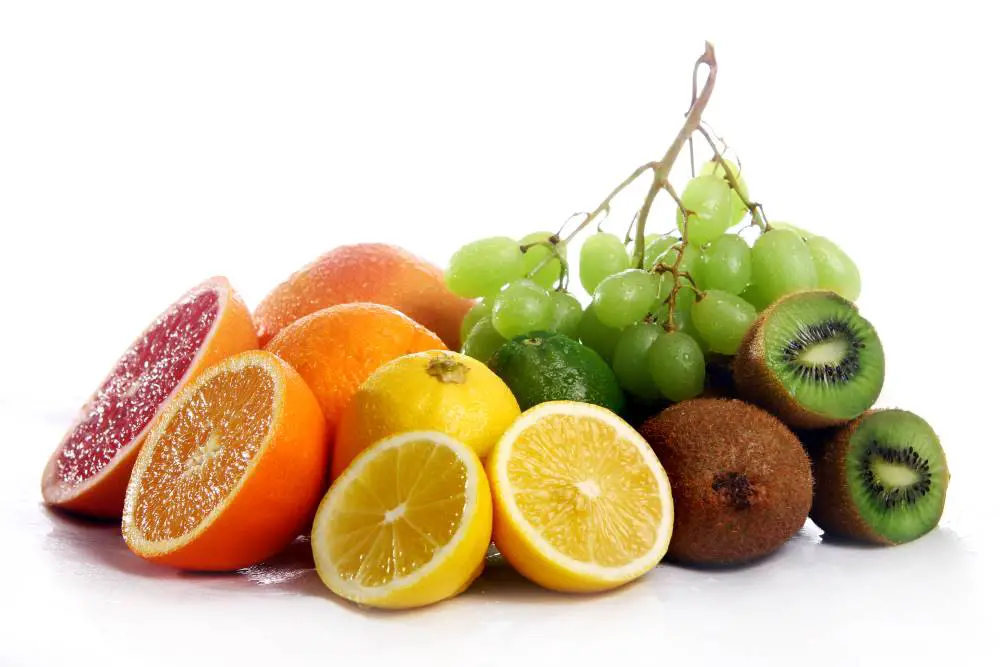Living with histamine intolerance has challenges. Bite into the wrong fruit and you could soon be clutching your head in pain, breaking out in hives, or running for the bathroom. Unlike common food sensitivities, this perplexing condition remains largely unknown, leaving many struggling to pinpoint the cause of their symptoms.
One question you might have relates to high-histamine fruit. By learning which fruits to enjoy in moderation versus avoid, you can take concrete steps to tame symptoms and thrive.
In this article, we’ll look at high-histamine fruit that you should avoid or consume only in modest quantities on a low-histamine diet. You’ll discover why common favorites like strawberries and citrus can quickly turn into foes.
Arm yourself with the fruit intel needed to feel your best, one tasty (and strategic) bite at a time. With insight, you can chart a path forward for mastering histamine intolerance and avoid high-histamine fruit that can trigger histamine intolerance symptoms.
1. Avocado
Avocado – it’s the butter fruit we can’t get enough of. From guacamole to smoothie bowls, this superfood adds creaminess and healthy fats galore. But for those managing histamine intolerance, avocado can quickly go from friend to foe.
While nutrition pros praise avocados’ virtues, they’re also surprisingly high in histamines. (1) This creamy fruit can also trigger histamine release by mast cells, making it a histamine liberator. So, it’s one to avoid on a low-histamine diet.
For most people, avocado is a nutrient-dense food and a good source of healthy fats. But if you have histamine intolerance, avocado’s histamine punch can trigger headaches, hives, digestive woes, and other unpleasant reactions.
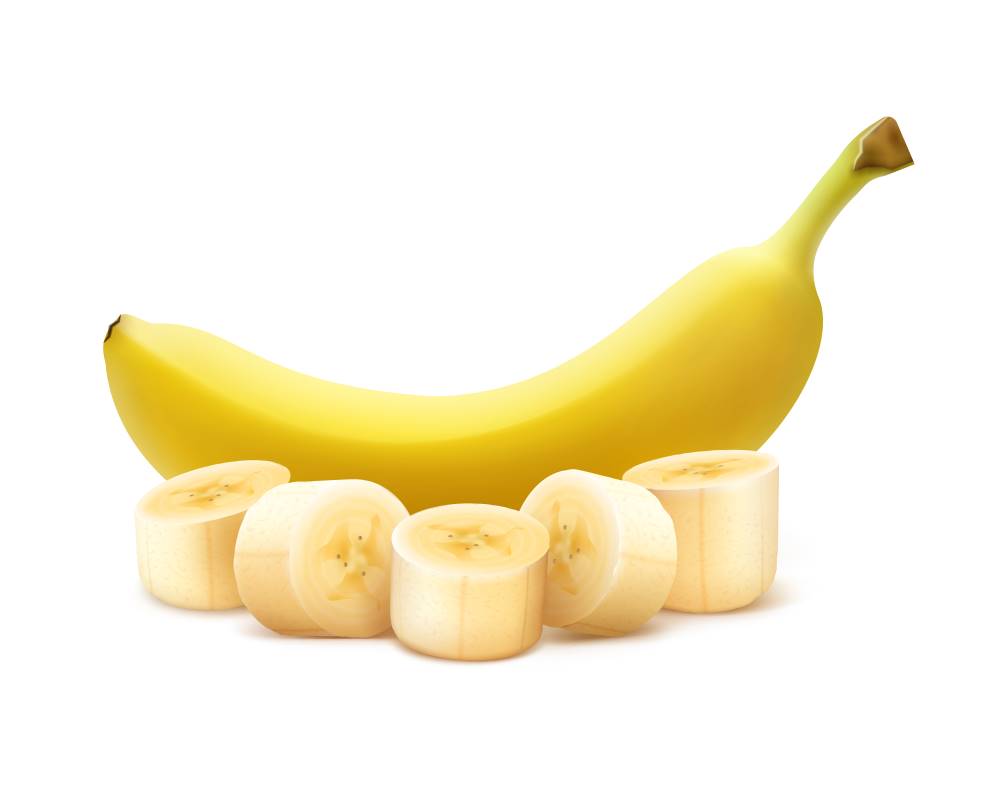
2. Bananas
Bananas – they’re one of nature’s convenience snacks, popping up in school lunches across America. But for those with histamine intolerance, bananas are tricky.
Unlike inherently high-histamine foods, bananas are not obvious offenders. Yet they belong to a sneaky group called histamine liberators – foods that spur our cells to release stored histamine. It’s like bananas can secretly signal our bodies to unleash histamines already inside us.
Scientists don’t fully understand why bananas have this effect. And not all people with histamine intolerance react when eating them. But it’s wise to be cautious and do some personal testing. Bananas also contain other bioactive amines, besides histamine, that your body can react to. (2)
Ripeness is key – overripe bananas tend to harbor higher histamine levels as they break down. So, if you’re histamine-sensitive, try unripe bananas first and slowly introduce riper ones over several weeks. Discover your unique tolerance.
While bananas may not always be your go-to grab-and-go snack, with some trial and error, you can find your sweet spot. In the world of histamine intolerance, knowledge is power – arm yourself with the right intel to make bananas work for you.
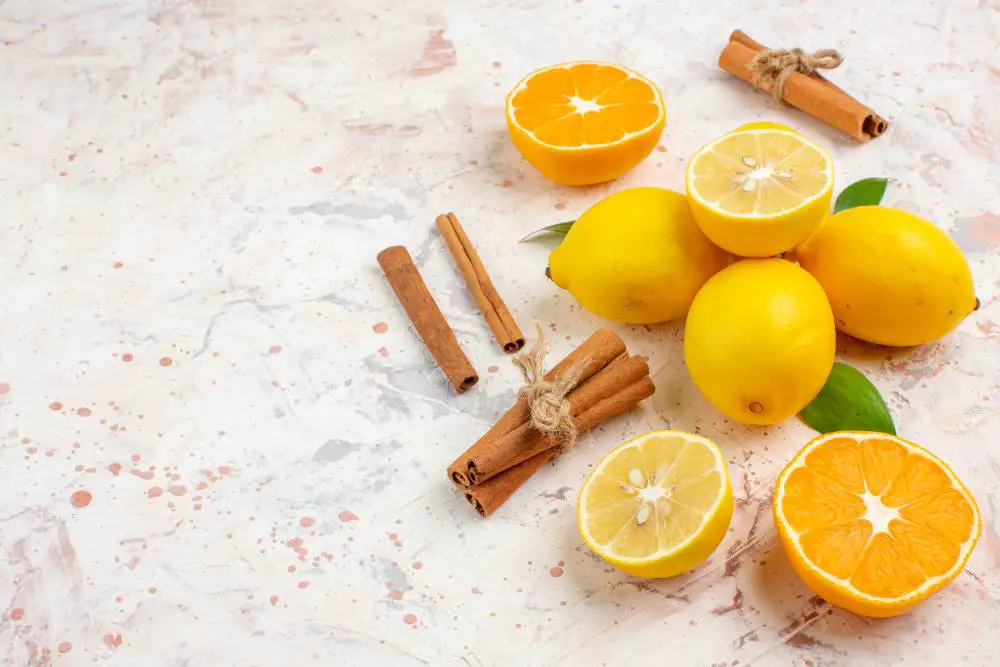
3. Citrus Fruits
Citrus fruits are prized for their bright pops of flavor, but their zesty bite may turn sour for those with histamine intolerance. Like sneaky bananas, citrus belongs to the histamine liberator squad – they’re stealthily able to prompt our cells to unleash stored histamine.
Adding insult to injury, citrus fruits also contain other biogenic amines that can stall the breakdown of histamine that’s already circulating. It’s a double whammy that can spell trouble for histamine-sensitive folks.
Ripening also boosts citrus’ histamine levels as proteins break down. So, an overripe tangerine or grapefruit packs a higher histamine punch.
If you love citrus fruit, and don’t want to avoid it entirely, test your personal tolerance. After taking a break from citrus for several weeks, slowly reintroduce small amounts and tune in to your body’s responses. You may find you can enjoy an occasional clementine or lemon wedge once you determine your limits.
However, be cautious with citrus fruits in general if you have histamine intolerance. Citrus fruits include lemons, limes, oranges, and grapefruit.
Also, learn more about the histamine content of cranberries.
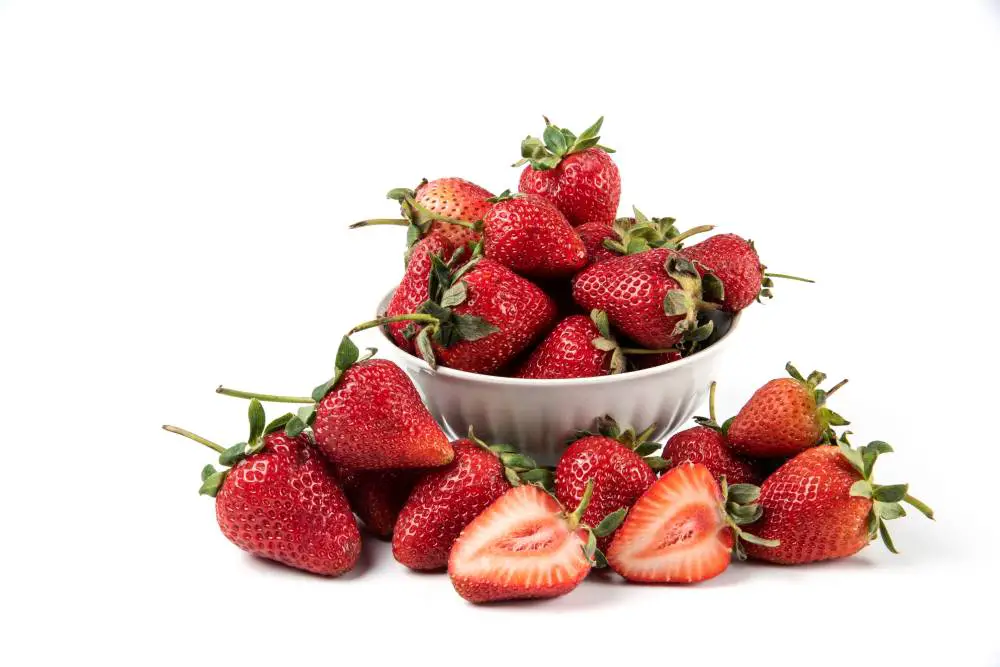
4. Strawberries
Strawberries – their sweet tartness makes them the darlings of summer. But those managing histamine intolerance need to be wary of these ruby red berries. They’re nutrient-dense, naturally low in sugar, beautiful to look at, and tasty too. But strawberries are a fruit to avoid if you have histamine intolerance. Why?
Strawberries are a histamine liberator, meaning they can increase your body’s histamine burden despite not containing high levels of histamine. That’s why strawberries are a berry you should add to your list of high-histamine fruit to eliminate from your diet.
The longer those berries sit in the fridge, the more histamine and other biogenic amines build up. The number of biogenic amines in fresh foods is lower than in foods that you buy at the grocery stores and let them sit around before eating them.
If you like the taste of berries, there are lower histamine choices such as blueberries. Choose the freshest ones possible and eat them quickly before they ripen too much. If you can’t eat them fast, buy frozen ones.
5. Papaya
Papaya presents an intriguing paradox for those with histamine intolerance. This tropical fruit is famed for its low innate histamine levels – a seeming godsend. However, papaya has a sneaky alter ego as a histamine liberator, capable of spurring our cells into releasing stored histamine.
Papaya also contains amines that may impede histamine breakdown, adding to the complexity. (4) So while papaya alone is low histamine, its stealth abilities may still spell problems for some.
With histamine intolerance so individualized, it’s wise to cautiously test your own papaya tolerance. Avoid it completely for several weeks, then slowly reintroduce a small serving and observe any reactions.
You may find you can enjoy this vitamin C-rich fruit as part of your low-histamine diet once you learn your personal limits. With strategic experimentation, papaya could become a delicious ally in managing your condition. But as with any potential liberator, an awareness of papaya’s powers is key.
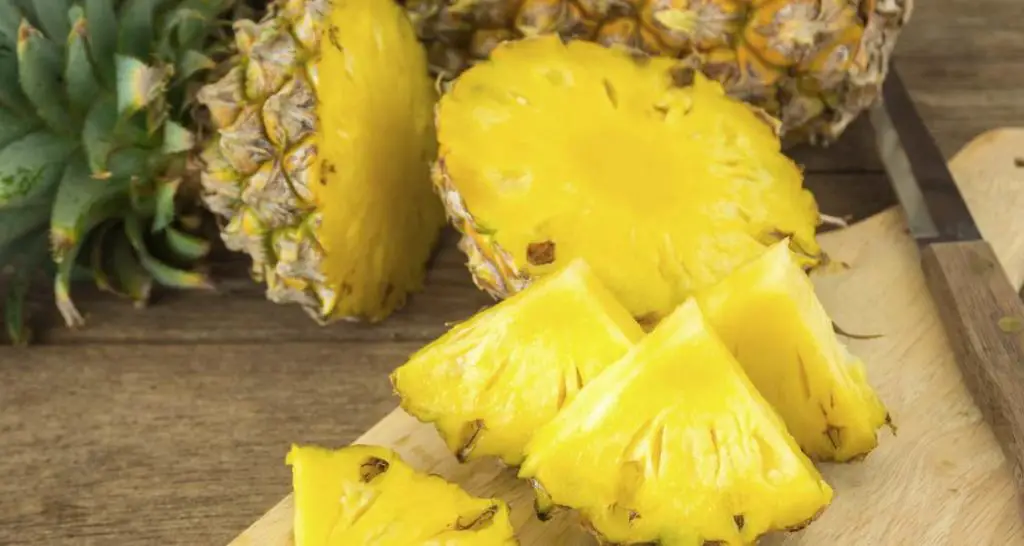
6. Pineapple
Pineapple is an intriguing case in the world of histamine intolerance. This tropical fruit is actually considered low histamine. Yet it falls into the sneaky histamine liberator category – pineapple can covertly signal our bodies to release histamine stores already inside us.
Adding to the complexity, pineapple also contains other amines that may hinder histamine breakdown. So, while not high in histamine itself, it possesses a potent mix of properties that may spell trouble for some.
With histamine intolerance so personally variable, it’s wise to cautiously test your own tolerance if pineapple is a beloved snack. Take a pineapple break for several weeks, then slowly reintroduce a small serving and tune in to your body’s response.
You may find you can enjoy juicy pineapple in moderation once you determine your limits. But it pays to be aware of pineapple’s stealthy abilities as a histamine liberator. Arm yourself with knowledge to make wise dietary choices for your unique needs.
7. Dried Fruit
Dried fruits – their chewy, concentrated sweetness makes them a popular on-the-go snack. But if you’re managing histamine intolerance, dried fruits can be a sticky situation.
It’s well known that the drying process concentrates histamines along with flavor. Raisins and prunes tend to be high-histamine dried fruits, while mango and pineapple are less so.
Dried fruits may also contain sneaky added preservatives like sulfites that provoke reactions in some people. It’s a minefield of potential issues.
The key is not to fear dried fruit but approach them with caution. After taking a break from dried fruit for a few weeks, slowly reintroduce a small serving and pay attention to how you feel. You may find certain types or amounts you can enjoy in moderation.
With careful self-testing, you can discover how to work dried fruit into your low-histamine diet. And if you do react, try other options like fresh fruit with naturally sweet flavor. Knowledge and awareness give you the power to make wise choices.
8. Canned Fruit
Although there are low-histamine fruits, buy them fresh. A study found that canned fruit contains higher levels of histamine. (3) They also found that the amount of histamine in canned fruit increased with storage time and with the temperature of storage.
It goes without saying that you should avoid canned citrus fruit since you get a double whammy – a histamine-liberating fruit in a can. Also avoid, canned fruit juice.
Another concern is that most cans are lined with bisphenol A (BPA), a hormone disrupting chemical. So, canned food has other concerns beyond its histamine content.
Other High-Histamine Fruit to Avoid
Other fruits to avoid on a low-histamine diet (or approach with caution:
9. Raisins
10. Plums
11. Prunes
12. Tomatoes
13. Olives
14. Kiwifruit (may be a histamine liberator).
15. Fruit juice
Avoid High-Histamine Fruit on a Low-Histamine Diet
Fruits are undeniably nutritious pillars of a healthy diet. Yet for those with histamine intolerance, even nature’s candy can be complicated. While not all fruits are high histamine, their ability to secretly liberate our body’s stored histamine makes many a potential minefield. Be aware and listen to your body – and don’t forget to keep a food diary.
In Summary:
- Avoid or determine your body’s individual response to high-histamine fruits.
- Avoid fruit in a can, fruit juice, or dried fruit.
- Buy the freshest fruit possible.
- Keep a food journal to monitor how various fruits and other food affect your symptoms.
Also, discover low-histamine snacks that are quick and easy. Also, find out whether cherries contain histamine and whether dragon fruit is a good choice for a low-histamine diet.
References:
- Sánchez-Pérez S, Comas-Basté O, Rabell-González J, Veciana-Nogués MT, Latorre-Moratalla ML, Vidal-Carou MC. Biogenic Amines in Plant-Origin Foods: Are They Frequently Underestimated in Low-Histamine Diets? Foods. 2018 Dec 14;7(12):205. doi: 10.3390/foods7120205. PMID: 30558197; PMCID: PMC6306728. Biogenic Amines in Plant-Origin Foods: Are They Frequently Underestimated in Low-Histamine Diets? – PubMed (nih.gov)
- Singh B, Singh JP, Kaur A, Singh N. Bioactive compounds in banana and their associated health benefits – A review. Food Chem. 2016 Sep 1;206:1-11. doi: 10.1016/j.foodchem.2016.03.033. Epub 2016 Mar 11. PMID: 27041291. https://pubmed.ncbi.nlm.nih.gov/27041291/
- Ganapathy Balavinayagamani, Khalid A, Mong Xin Ru, Paulraj Ponnaiah. Histamine content in various types of canned foods (fruits and syrups) stored under different temperature… ResearchGate. Published August 2017. Accessed February 23, 2022. https://www.researchgate.net/publication/319187828_Histamine_content_in_various_types_of_canned_foods_fruits_and_syrups_stored_under_different_temperature_conditions_over_time-an_in_vitro_study
- Wójcik W, Łukasiewicz M, Puppel K. Biogenic amines: formation, action and toxicity – a review. J Sci Food Agric. 2021 May;101(7):2634-2640. doi: 10.1002/jsfa.10928. Epub 2020 Dec 12. PMID: 33159318. https://pubmed.ncbi.nlm.nih.gov/33159318/

